Description
burnanydji-2 gaykamanu
Earth pigments on Stringybark
141 x 47cm
Year: 2021
ID: 2652-21
Wuyal
This work is about Wuyal, the ancestral sugarbag man, an important ancestor of the Marrakulu clan of northeast Arnhem Land. This painting symbolizes his journey during which he named important sites and certain animals. The painting refers also to the continuation of the Marrakulu culture in dance, song and ceremony, which are performed by current generations who have inherited this knowledge and culture from ancestral figures such as Wuyal. This story refers also to important Dhuwa moiety ancestors called the Wawilak sisters.
Wuyal was the first man to look for any homeland for the Marrakulu people. He began a journey from Gurka’wuy traveling via Yuḏuyuḏu to Cape Shield, up to Trial Bay and along the course of the Goyder River until he came to Nhulun, or Mt. Saunders. Traveling along with Wuyal, was Ganyt’jalala. These men are symbolic of the Märi-Guthara (grandparent-grandchild) relationship which describes the relationship between Ḏäṯiwuy and Marrakulu clans.
Wuyal carried with him tools for hunting animals and for collecting wild honey or sugarbag. The dilly bag, Banduk, worn around his neck, was used to carry the sugarbag called guku. Wuyal used a stone axe, djalpaṯ, to cut down trees in his search for sugarbag. He also carried a stone headed spear for hunting rock wallabies, Ḏulaku. The stone head of the spear, Guyarra, is made from stone found at a place called Nilipitji. The shaft of the spear is called guṉḏit. Also carried was gaḻpu, a spearthrower.
In their ancestral travels these men traveled alone without wives and conducted what was mens’ business in ceremony. Wuyal’s ceremonial ground where he danced and conducted sacred ceremony, a place near Buffalo Creek and Mt. Saunders, is called Wandjipuy.
The tools were also used in shaping the land. Trees cut down by Wuyal in the search for sugarbag, turned into rivers. The Gurka’wuy river was made in this way. Wuyal also named places by throwing his boomerang, Gunyalili, and giving names to the places where it fell to the ground. From Mt. Saunders he threw his Gunyalili and named a place called Gäluru in this way.
Bees are the creators of the honey from these flowers. The continuum between the environment, the art and the sacred foundation of the Marrakulu is completed when the Marrakulu dance as bees in their ceremony elbows extended, hands clutching stringybark leaves which vibrate as wings.
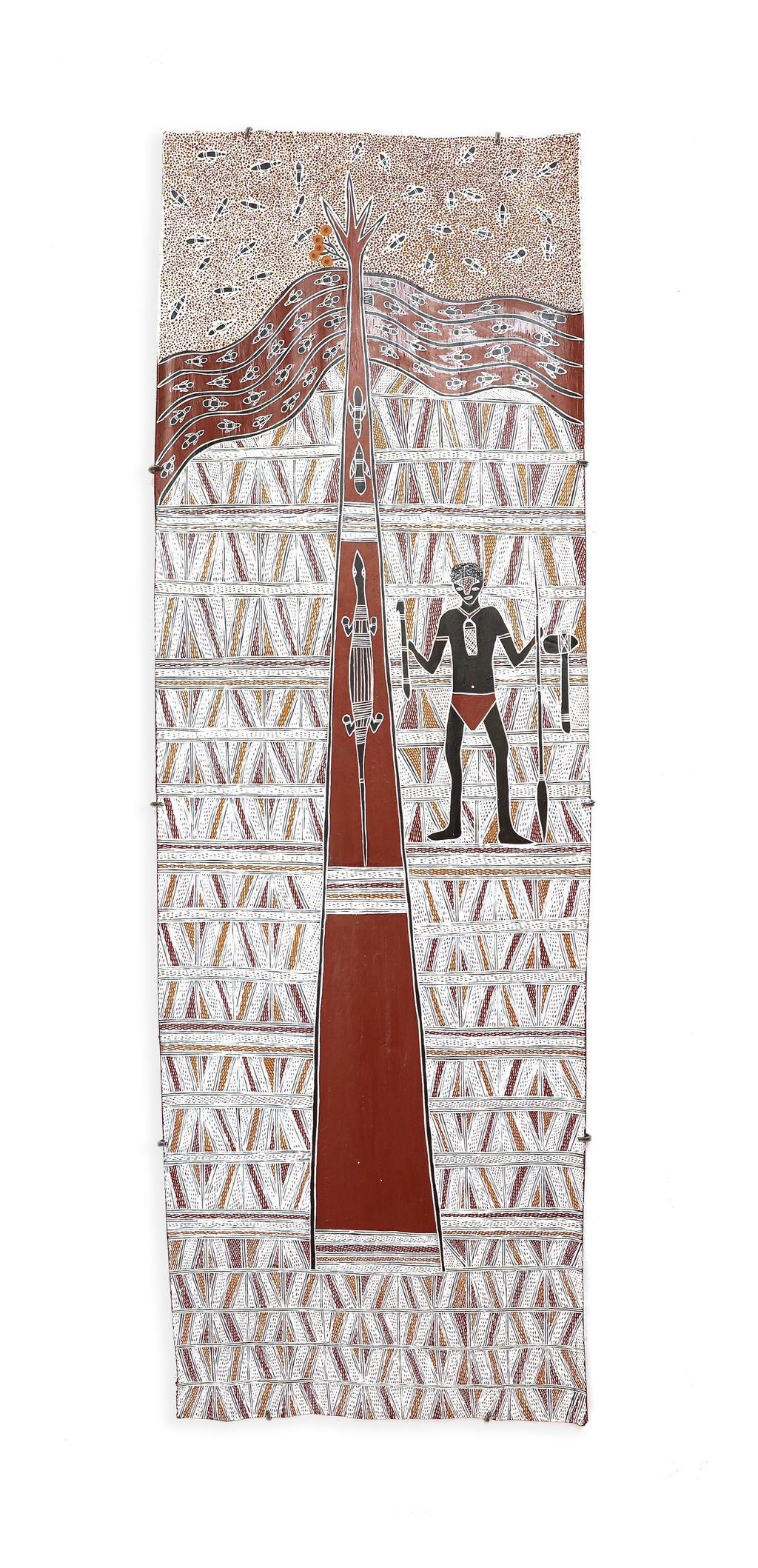
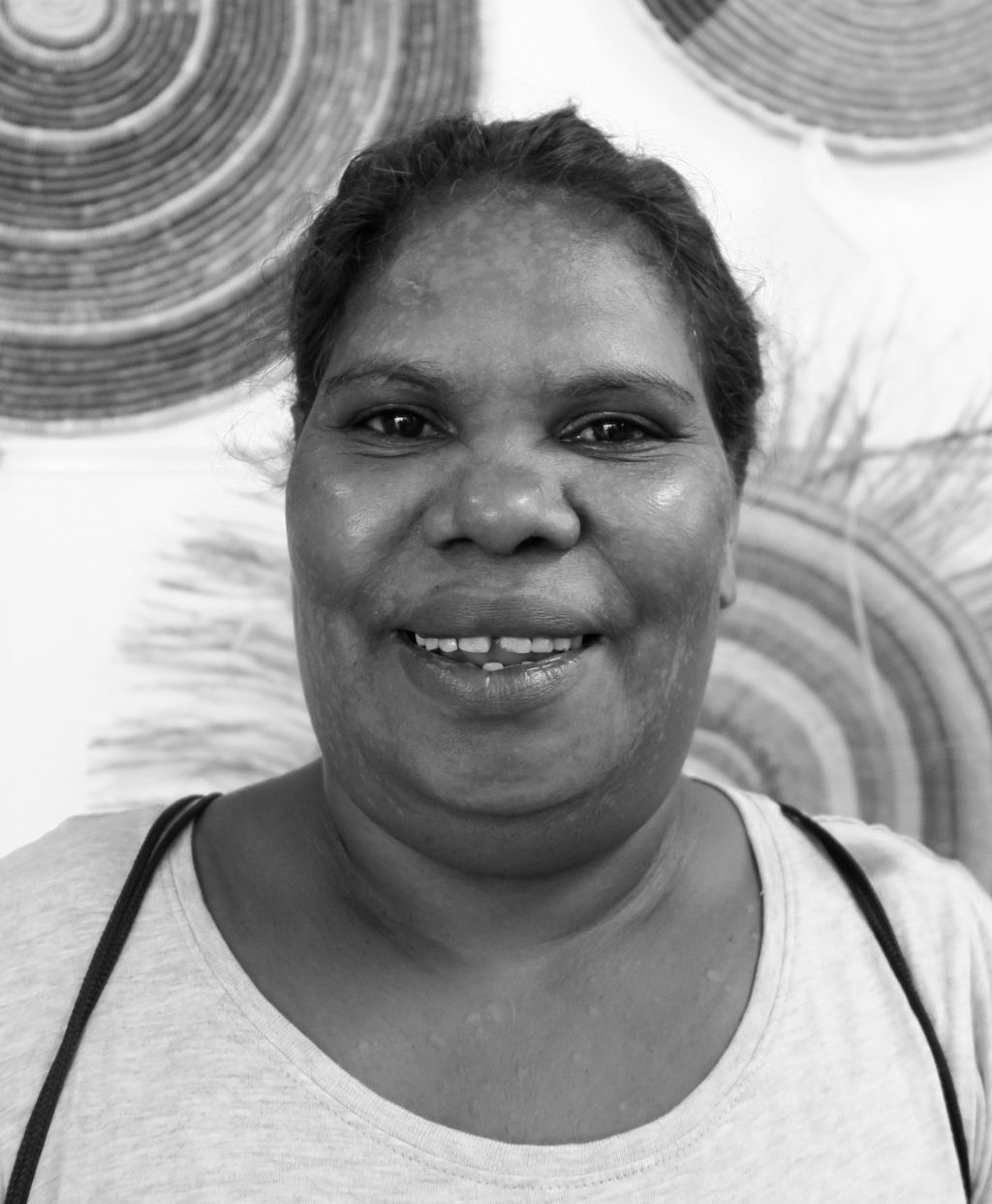
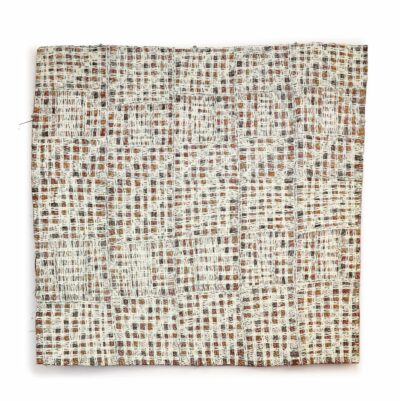
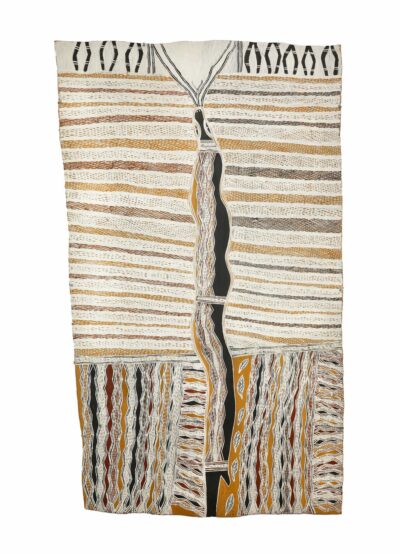
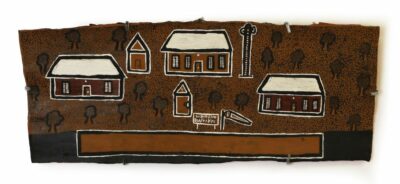
Reviews
There are no reviews yet.